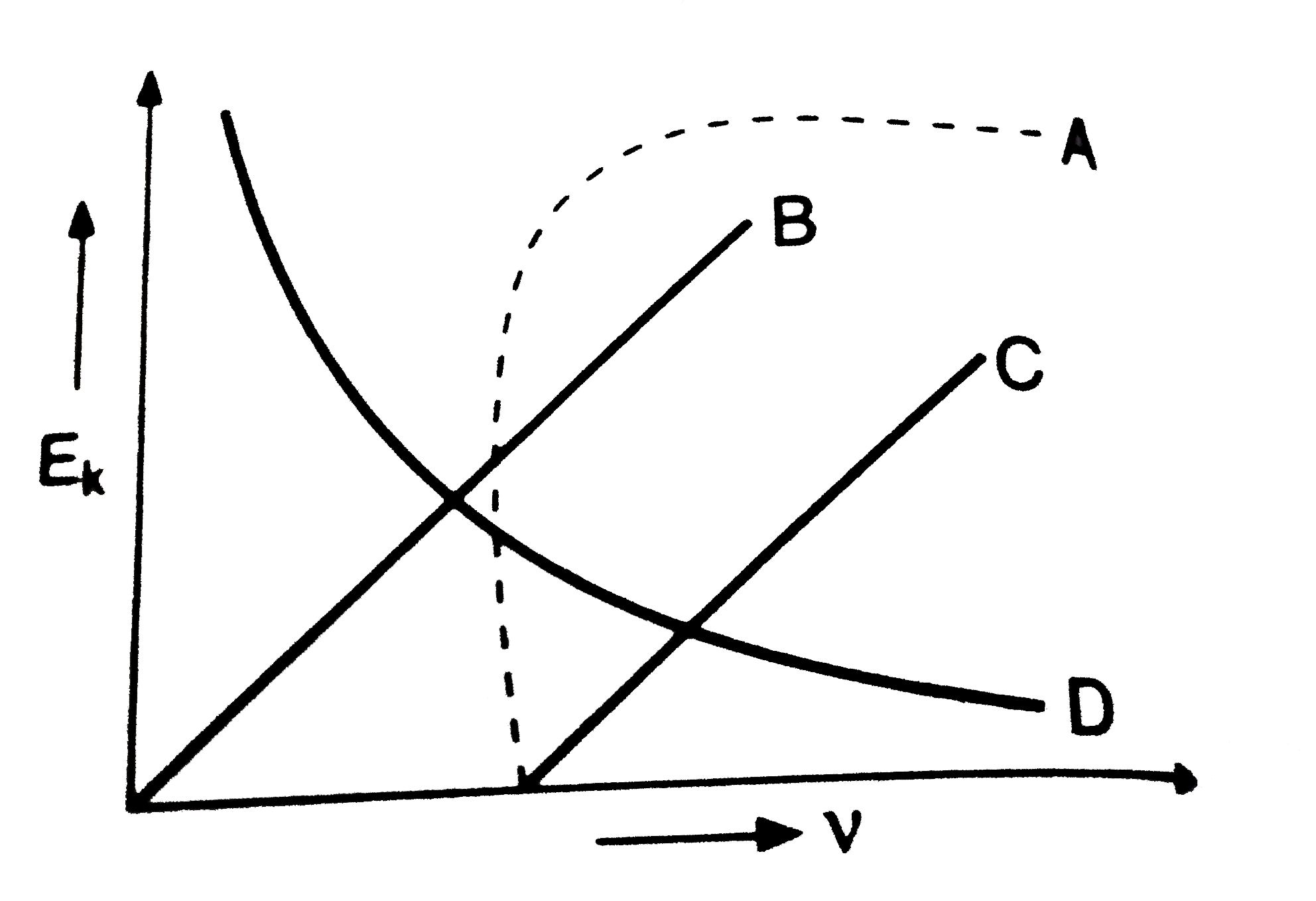When ultraviolet light is incident on a photocell, its stopping potential is V0 and the maximum kinetic energy of the photoelectrons is Kmax. When X-rays are incident on the same cell, then:
V0 and Kmax both increase
V0 and Kmax both decrease
V0 increases but Kmax remains the same
Kmax increases but V0 remains the same
The correct Answer is:A
The energy of X-ray is more that of U.V. Light. Hence, the K.E. of emitteed photoelectron is more and hence stopping potential required is also more.
Topper's Solved these Questions
- ATOMIC PHYSICSBook:RESONANCEChapter:ATOMIC PHYSICSExercise:Exercise (2) Only one option correct type
Explore 30 Videos
- ATOMIC PHYSICSBook:RESONANCEChapter:ATOMIC PHYSICSExercise:Exercise-2 part-II Single and double value integer type
Explore 12 Videos
- ATOMIC PHYSICSBook:RESONANCEChapter:ATOMIC PHYSICSExercise:Exercise 1 Part-1 subjective questions
Explore 35 Videos
- ALTERNATING CURRENTBook:RESONANCEChapter:ALTERNATING CURRENTExercise:HIGH LEVEL PROBLEMS
Explore 11 Videos
- CAPACITANCEBook:RESONANCEChapter:CAPACITANCEExercise:High Level Problems
Explore 16 Videos
Similar Questions
Knowledge Check
Statement - 1 : When ultraviolet light is incident on a photoncell , its stopping potential is V0 and the maximum kinetic energy of the photoelectrons is Kmax when the altraviolet light is replaces by X- rays both V0andKmaxincrease
Statement - 2 : photoelectrons are emitted with speeds ranging from zero to a maximum value because of the range of frequencies present in the incident lightAStatement - 1 is true , statement - 2 is true , statement - 2 is the correct explanation of statement - 1BStatement - 1 is true , statement - 2 is true , statement - 2 is not the correct explanation of statement - 1CStatement - 1 is false , statement - 2 is trueDStatement - 1 is true , styatement - 2 is falseThe maximum kinetic energy of the photoelectrons is related to the stopping potential (v0) thorugh the relation
AKEmax=eV0BKEmax=e/V0CKEmax=eV20DKEmax=e√V0Light of frequency 4v0 is incident on the metal of the threshold frequency v0. The maximum kinetic energy of the emitted photoelectrons is
A3hv0B2hv0C32hv0D12hv0
The stopping potential in an experiment on photoelectric effect is 1.5 V. what is the maximum kinetic energy of the photoelectrons emitted ?
View SolutionThe stopping potential in an experiment on photoelectric effect is 2V. What is the maximum kinetic energy of the photoelectrons emitted ?
View SolutionMaximum kinetic energy of the photoelectrons is independent of the intensity of incident radiation .
Give reason.
View SolutionThe stopping potential in an experiment on a photo electric effect is 1.5 V. What is the maximum kinetic energy of the photoelectrons emitted?
View SolutionThe maximu kinetic energy (Ek) of the photoelectron varies with frequency (v) of the incident light as shown by the curve:

View Solution

